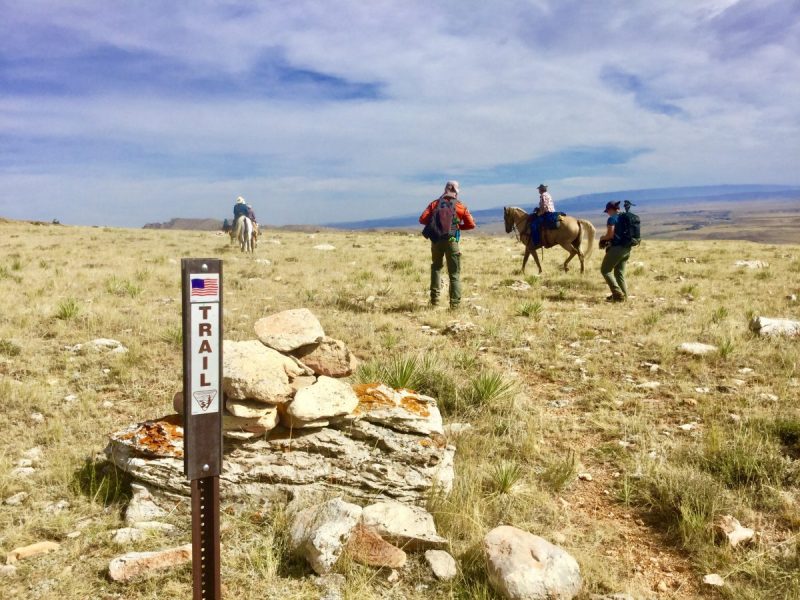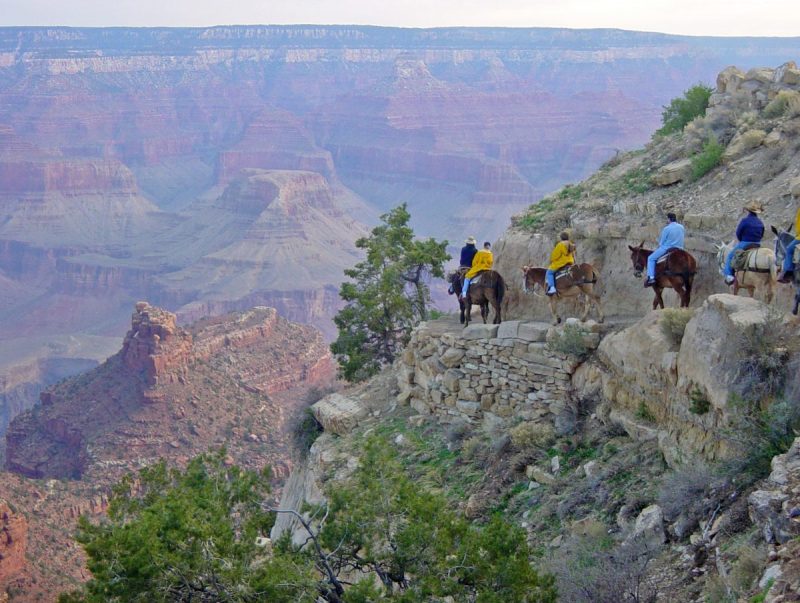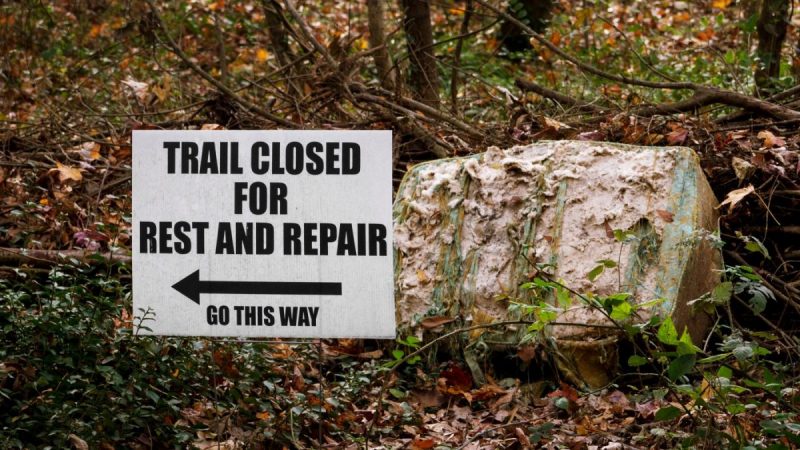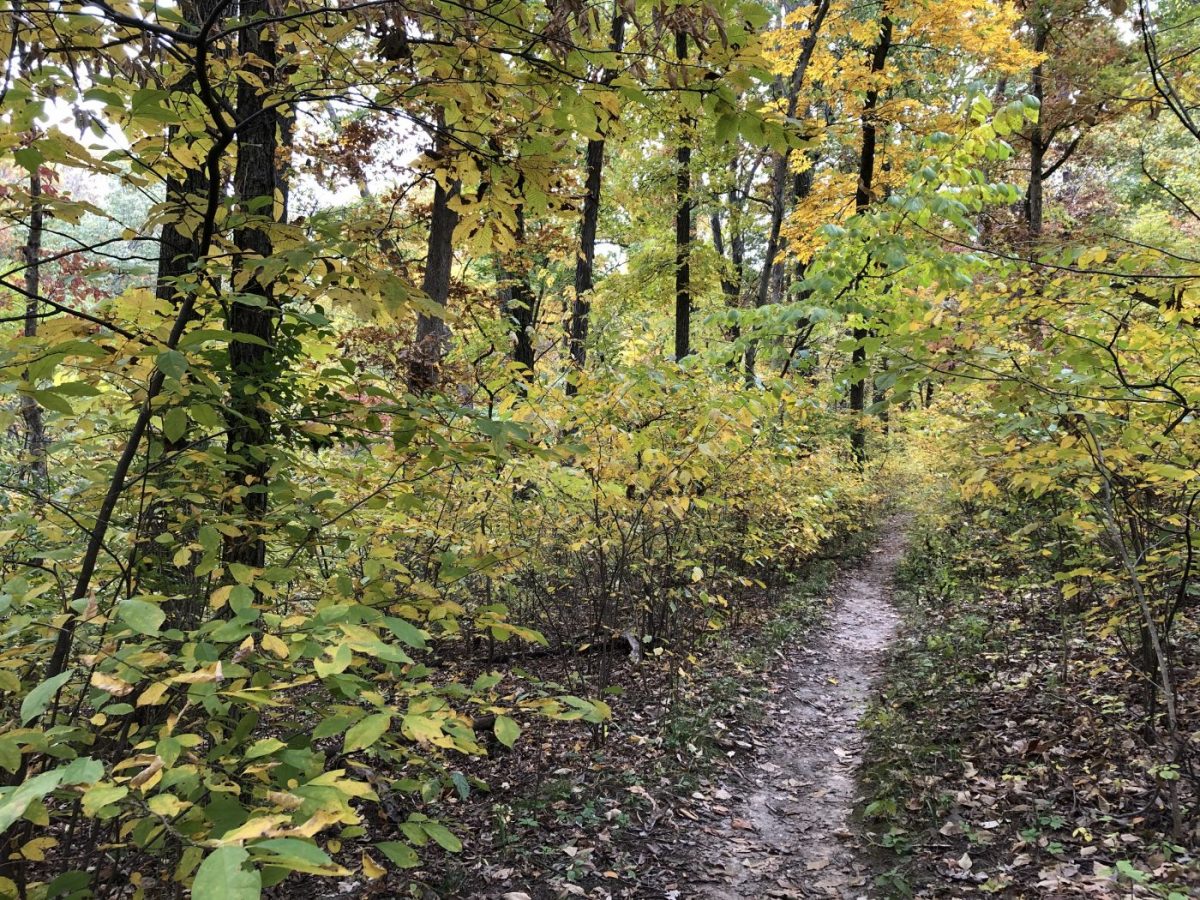Imagine a different interpretation of Robert Frost’s famous poem The Road Not Taken — a less romantic, more clear-cut version. The subject, instead of a young man beset by the decision of which direction to take in life, is simply a hiker tempted by the prospect of a spectacular view or befuddled by poor trail markings. The first trail is part of an established trail system; the second “less traveled” one, an informal trail created over time by lost or overly curious hikers.
The name given to informal trails created by erosion from human foot traffic, social trails have led even the most environmentally or conservation-minded among us astray — when the prospect of a beautiful sight, or promising future in Frost’s case, have been simply too tempting to ignore.
Social trails often begin with a recreationist attempting to meet a need that isn’t being met by an existing trail, says Shawn Burn, a psychology professor at California Polytechnic State University whose research has focused on the psychology of environmental sustainability. “That may be a desire for a special view or an intentional desire to follow a game trail or view wildlife. They can even begin by people going off trail to take a wee,” she notes. “But sometimes it’s an error. They mistake a game trail for the path, or trails are poorly marked.”
A lack of education and differences in environmental values influence individuals’ decision around whether to follow these routes as well. “People vary in their environmental values,” Burn says. “This affects their environmental concern and how they behave in natural resource settings.”
“It’s also true that people might know it’s not the real trail but figure, ‘Why should I lose out if everybody else is breaking the rule? … I might as well benefit.’”
Well-established social trails may indicate to some hikers, especially those unfamiliar with an area, that they too should go that way or that it’s the correct route.
“Perhaps FOMO (fear of missing out) is sometimes a factor. After all, the social trail may suggest that there’s something good that way,” explains Burn. “But it’s also true that people might know it’s not the real trail but figure, ‘Why should I lose out if everybody else is breaking the rule? … I might as well benefit.’”
Such behavior, however, often has unnoticeable consequences on that natural setting. Research has shown that outdoor recreation in general — not just social trails — can and often does negatively affect wildlife. Human presence can startle animals, leading to increased stress levels and causing them to burn energy reserves, which are particularly dire during cold winter months. This can also result in animals’ displacement and reduced productivity and, in the worse cases, even decrease their chances of survival.
For plants, it’s a similar story.
As social trails are used more and more, the soil becomes increasingly compacted so that the plants that used to grow there are no longer able to.
“When the native species aren’t able to come back because of that soil compaction, often the species that are best suited to grow in those situations are non-native, and as people continue to use the corridor to walk, ride their horse or bike, they start to transport those non-native seeds further into the area,” says Scott Linnenburger, principal and owner of Kay-Linn Enterprises, a consulting firm that offers sustainable recreation and conservation planning, design and construction services.

“If we start to play the choose-your-own-adventure game, and everybody goes wherever they want, however they want, we start to degrade that resource quality and the landscape’s ability to function naturally — and then it comes into question why it was conserved in the first place,” Linnenburger says.
Sustainable Trails
While recreation and conservation often seem at odds with one another, that’s only when viewed through a narrow lense. There is a way to reconcile both desires that allows for the conservation of the land and resources and our ability to enjoy them. It’s about ensuring minimal impact while getting people where they want to go, Linnenburger notes.
“One of my mentors in trail development often says, ‘It’s not people that need trails; it’s the land that does,’” he says. “We are able to get to wherever we need to get to on the landscape, but if we do that in an unmanaged, unplanned way, the impacts that we have on that landscape are magnified by every unnecessary trail that’s out there.”
The negative effects of social trails underscore the importance of well-marked, maintained and sustainably built trail systems — those that are purposefully developed. “A designated trail system, [one that’s] well planned, designed, constructed and maintained, minimizes the human impact on the landscape that’s been conserved,” Linnenburger says.
A sustainable trail system is one that is able to withstand the “erosive powers of water and wind to provide a tread surface that will sustain over time without appreciable damage,” he notes. “More broadly, sustainable trails are — in the social or managerial context — trails that take people where they want to go, that are easily navigable, that can be effectively maintained over time by a land managing agency and volunteer stewards.”
“People want to have a sense of adventure and maybe even danger on their trails, so trying to buffer that human emotion is often unsuccessful.”
Designing sustainable trails is Linnenburger’s specialty. A master’s degree in environmental management and a background in stream and wetland ecology have aided him in his work with the Professional Trail Builders Association (PTBA) — for which his company Kay-Linn Enterprises provides the contractual staff. The only private sector group of professional trail contractors, designers and consultants, representing more than 100 member companies worldwide, PTBA emphasizes sustainable trail development, even hosting a Sustainable Trails Conference every spring.
So, what goes into planning and constructing a sustainable trail?
“I think it’s probably easier to characterize what sustainable trails typically have not been over time,” Linnenburger says.
The vast majority of the trail miles in the United States are actually converted industrial routes: logging or carriage roads, railroad grades or open utility corridors.
“As industrial routes, those were meant to bring people and/or materials from point A to point B in the most expedited manner,” Linnenburger says. “That meant they typically went straight up and down hills or stripped through some place that was low and wet because it was the minimum distance needing to be covered to make that industry happen.
“As such, they weren’t ever planned around aspects of natural resources or for sustainable design and water-shedding characteristics that a trail really needs,” he explains.
The first step in developing a sustainable trail is determining what the purpose of said trail is and where it’s intended to take people. Then comes mapping the route so that it mimics nature as much as is possible — i.e., it runs parallel to topographic contours rather than perpendicular. By doing so, Linnenburger says, you are placing the trail in a location “where it’s hydrologically invisible,” meaning it won’t be capable of carrying much water or producing much erosion. Considering sensitive species and their habitat, such as wetlands and waterways, as well as migration routes is also critical.

But from the outset, Linnenburger notes, it’s imperative to understand that a trail “needs to get people to where they want to go; otherwise, we’ll lose the battle.” Ultimately, people will get where they want to go (i.e., to beautiful sights and views, like waterfalls or canyons) whether a trail takes them there or not.
Balancing Interests
Creating sustainable trail systems is thus a delicate balancing act. Considering the desires of recreationists — and the sites they’ll want to see — as well as environmental concern for plants and wildlife, in addition to balancing individuals’ safety with their thirst for adventure, can be tricky.
While maintaining public safety is important across all outdoor recreation activities, “many people go outside for a sense of adventure and even a sense of a lack of safety,” Linnenburger says. “People want to have a sense of adventure and maybe even danger on their trails, so trying to buffer that human emotion is often unsuccessful.”
Taming human desire is the hardest part, particularly when it comes to closing off existing social routes.
“There’s a heavy psychology aspect to closing trails because people have kind of an inherent relationship with trails and they feel like it’s theirs,” says Linnenburger.
Thus, closing off these routes requires more than just raking plant debris over an old social trail or putting up a ‘No Trespassing’ sign, says Aaryn Kay, director of operations for PTBA. “You have to make that social trail … disappear from everybody’s memory and vision as you’re trying to create these more sustainable routes,” she says.
“We tell folks … that with the redesign or re-location of a trail, that experience has to be better than what the experience of the closed trail was. If it doesn’t provide the same experience or better, the old trail will be reopened.”
That’s not to say that a fence shouldn’t be installed temporarily while a trail is being restored to its natural state. It shouldn’t, however, be the only approach taken by land managers, Linnenburger says. “Research has demonstrated that a fence doesn’t close a trail, but vegetation or a fenced barrier with some communication is the most effective way,” he explains.
More than letting recreationists know that a trail is closed, land managers should explain the reason for the closure, the importance of re-creating the trail in a more sustainable way and the resulting benefits for plants, wildlife and people.
“Often, we tell folks who are having to do these trail closures that with the redesign or re-location of a trail, that experience has to be better than what the experience of the closed trail was,” says Linnenburger. “If it doesn’t provide the same experience or better, the old trail will be reopened.”
Kay believes that interpretive signage, when done right, can help appeal to people’s better selves.
“People want to do the right thing,” says Kay. “So if [a sign] just says ‘Trail Closed,’ it’s like ‘well, why?’ But if you have a reason, like due to wildlife concerns or for restoration, there are ways to craft effective language.”
Traditionally, however, land management agencies’ approach has been more “command-control,” according to Linnenburger. “They often think putting up a sign that says ‘Trail closed. Trespassing punishable by this kind of a fine.’ is a good way to reach people,” he says, “but that’s not really meeting the recreationists on their own terms.”
Educating recreationists about the landscape — that “it’s not just an open palette to go wherever you want,” says Linnenburger — and that it’s being managed for multiple purposes, including conservation, is perhaps a better, more effective approach.

“Interpretive signage and pamphlets should emphasize the fragility of the ecosystem and the importance of staying on marked trails so that the area can be preserved for human visitors and its non-human inhabitants,” says Burn, who is the creator of the Proenvironmental Behavior Change Model, which she used to develop the Environmental Intervention Handbook.
A tool for resource managers, available from the USDA Forest Service, the handbook is designed to help resource managers apply psychological research on sustainable behavior to solve human behavior problems in natural resource settings.
Even with such resources available, Linnenburger says, you don’t see a lot of educational outreach. He attributes this to dwindling budgets and, as a result, minimal ranger presence on the landscape — not to mention a lack of psychological prowess.
“It’s a delicate psychological balance [in which], frankly, if you’re trained to manage a forest or manage for wildlife on a piece of land, you don’t likely have training in sociology and psychology that allows you to kind of parse those nuances for the people visiting your lands,” Linnenburger says.
That is where volunteers and nonprofits have a role to play. For agencies struggling with dwindling budgets and staff, these groups can help serve as their boots on the ground — a kind of peer-to-peer approach to responsible recreation.
“Utilizing the folks who are most concerned and already ‘drinking the Kool-Aid’ so to speak in terms of the goals of the trail system and managing the resources that are on those lands is a great approach,” says Linnenburger. “People talking to people is much more effective than somebody in a uniform talking to people and saying the same things.”





